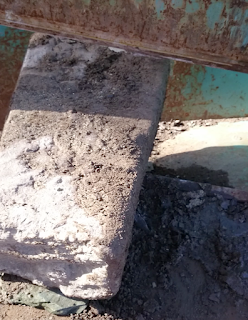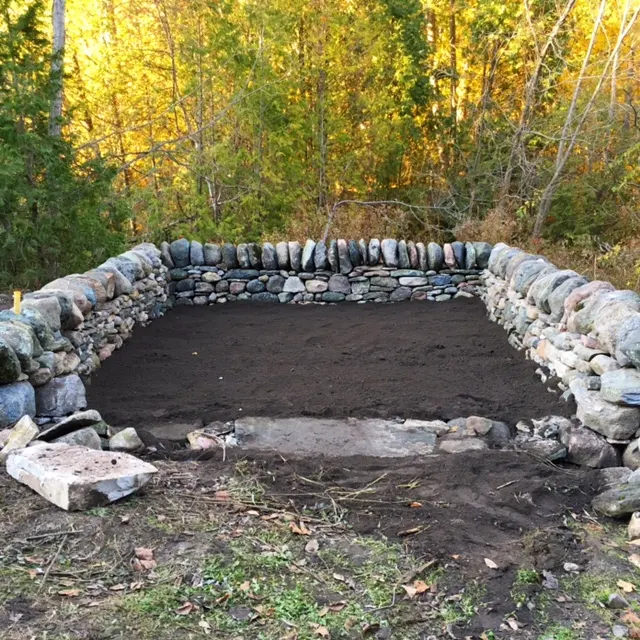Children's event at The Northumberland Dry Stone Festival 2006
Photo by John S-R
Professor Robert Thorson, professor at the University of Connecticut was invited to attend our 2008 Northumberland Dry Stone Wall Festival near Cobourg Ontario.
An expert on dry stone walls and a father of several children he reminded the audience in his lecture at the Capital Theatre in Port Hope on Saturday night that, "Children and stones just go together'.
He had us look back and remember our own childhood and the many games and activities we enjoyed that involved stones and rocks. He pointed out how much fun children through the ages have always had playing with this simple, commonplace, wonderfully diverse, natural material.
Children today are pressured by teachers and parents to be diligent in pursuing rigorous academic achievements from an early age, which often leaves little time for them to play with such dangerous dusty dirty technologically 'useless' things as stones.
As far as risk and danger goes I am glad to see that some playground designers are thinking differently about what kids should be allowed to interact with. ( see link below)
I just hope this trend continues and educators start to see the benefits of kids and stones being allowed to be together again to enjoy a broad range of healthy creative supervised activities.
http://ww2.nationalpost.com/m/wp/blog.html?b=news.nationalpost.com%2F2014%2F03%2F21%2Fwhen-one-new-zealand-school-tossed-its-playground-rules-and-let-students-risk-injury-the-results-surprised











































